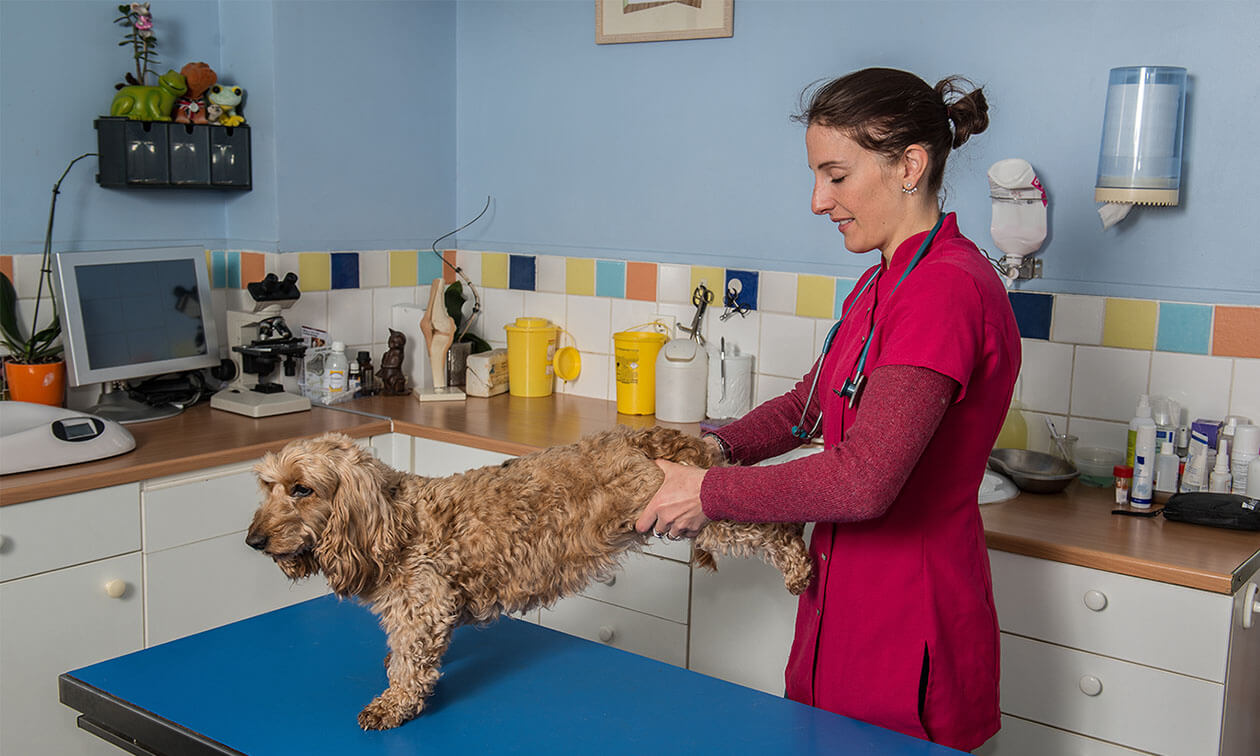One of the most common orthopedic issues for dogs is luxating patella1. It primarily affects small dogs, but can also impact large breeds — that's why learning a little about luxating patella is important, regardless of your dog's size. It may be an issue you and your dog have to deal with in their lifetime.
What Is a Luxating Patella in Dogs?
Before you can understand luxating patella, you need to know a little about the patella itself.
Patella is the medical anatomical term for kneecap, a protective cap for the knee joint that connects the femur (thighbone) and tibia (shinbone). It's a little bone embedded in the tendons of the thigh muscles. It sits in a groove at the end of the femur called the trochlear groove. When the patella moves out of its normal location within the trochlear groove, it's referred to as a luxating patella.
So, in short, a luxating patella is an overall misalignment of the leg that results from one or more skeletal abnormalities your dog was born with, like malformed thigh or shin bones. It is most often developmental, meaning your dog was born with abnormal conformation of their bones, though it can occur after trauma to the leg.
A luxating patella is either medial or lateral. This is based on which way it moves out of the groove. If the patella moves to the inner side of the knee, it's a medial luxating patella. If the patella moves to the outer side of the knee, it is a lateral luxating patella.
To add another layer, patella luxation is graded on a scale of one to four. The more severe the condition, the higher the grade. So, four would be the most severe and the patella is permanently out of the groove.
Are Some Dogs More Prone to Luxating Patella?
Yes. Small breed dogs predisposed to luxating patella include1:
• Boston Terrier
• Chihuahua
• Cavalier King Charles Spaniel
• French Bulldog
• Miniature and Toy Poodle
• Pekingese
• Pomeranian
• Yorkshire Terrier
Over the past 10 years, there has been a rise in larger breed dogs developing a luxating patella. Large breeds who more commonly have this condition include2:
- Akita
- Boxer
- Chinese Shar Pei
- Flat-Coated Retriever
- Golden Retriever
- Great Pyrenees
- Husky
- Labrador Retriever
In fact, about 7% of all puppies are diagnosed with luxating patella1, and dogs can have one or both knees affected.
Luxating Patella Signs to Look For
Signs will vary based on how serious your dog's luxating patella is. Often, there are no signs for mild cases (grade I), and it's discovered during a routine physical examination by a veterinarian.
The "skipping gait" is the most obvious sign you may see. Your dog will be walking along, and could skip, and hold up their hindlimb for a few steps. Then, after shaking the leg or kicking it out, they resume normal walking and appear completely fine as the patella slips back into its proper position.
The patella moves out of location more easily and frequently as the condition progresses. This results in more frequent and continuous lameness. So, monitoring is important to limit your dog's discomfort. Since there is constant rubbing of the patella on the cartilage of the knee, arthritis can also develop. This causes additional signs, like pain, lameness, and difficulty getting up and down. Dogs are also more likely to have cranial cruciate ligament ruptures as the condition worsens. Signs include lameness, favoring a hind leg, swelling of the knee, difficulty lying down or getting up, and discomfort or pain around the affected knee.
How Is Luxating Patella Treated?
Treatment is unnecessary for mild cases if your dog shows no signs.
For dogs with periodic lameness or arthritis, mild medical support is helpful. This involves:
- Maintenance of ideal body weight
- Omega-3 fatty acids
- Pain medications
- Regular, controlled exercise such as leash walks physical rehabilitation
Dogs with the advanced form (grade II or more) or those with persistent lameness generally require surgery.
What Does Luxating Patella Surgery and Recovery Entail for Your Dog?
There are different surgical approaches to correct a luxating patella. Your dog may need one or a combination of techniques to address all the issues.
Recovery is a key part of the process. Your veterinarian will give you detailed discharge instructions following surgery. It’s critical to follow these instructions precisely to have a successful recovery. They may also recommend physical rehabilitation as part of recovery.
Having your dog checked routinely by your veterinarian is an important first step in catching a luxating patella early and managing the condition’s progression. This is especially true if they’re a predisposed breed.
Once you know they have the condition, set your dog up for the best outcome by keeping them at an ideal weight and ensuring regular, controlled exercise.
ZPC-03291
- Patellar Luxations. American College of Veterinary Surgeons. https://www.acvs.org/small-animal/patellar-luxations/. Accessed October 18, 2023.
- Patellar Luxation. National Library of Medicine. https://www.ncbi.nlm.nih.gov/pmc/articles/PMC1524842/. Accessed October 18, 2023.



